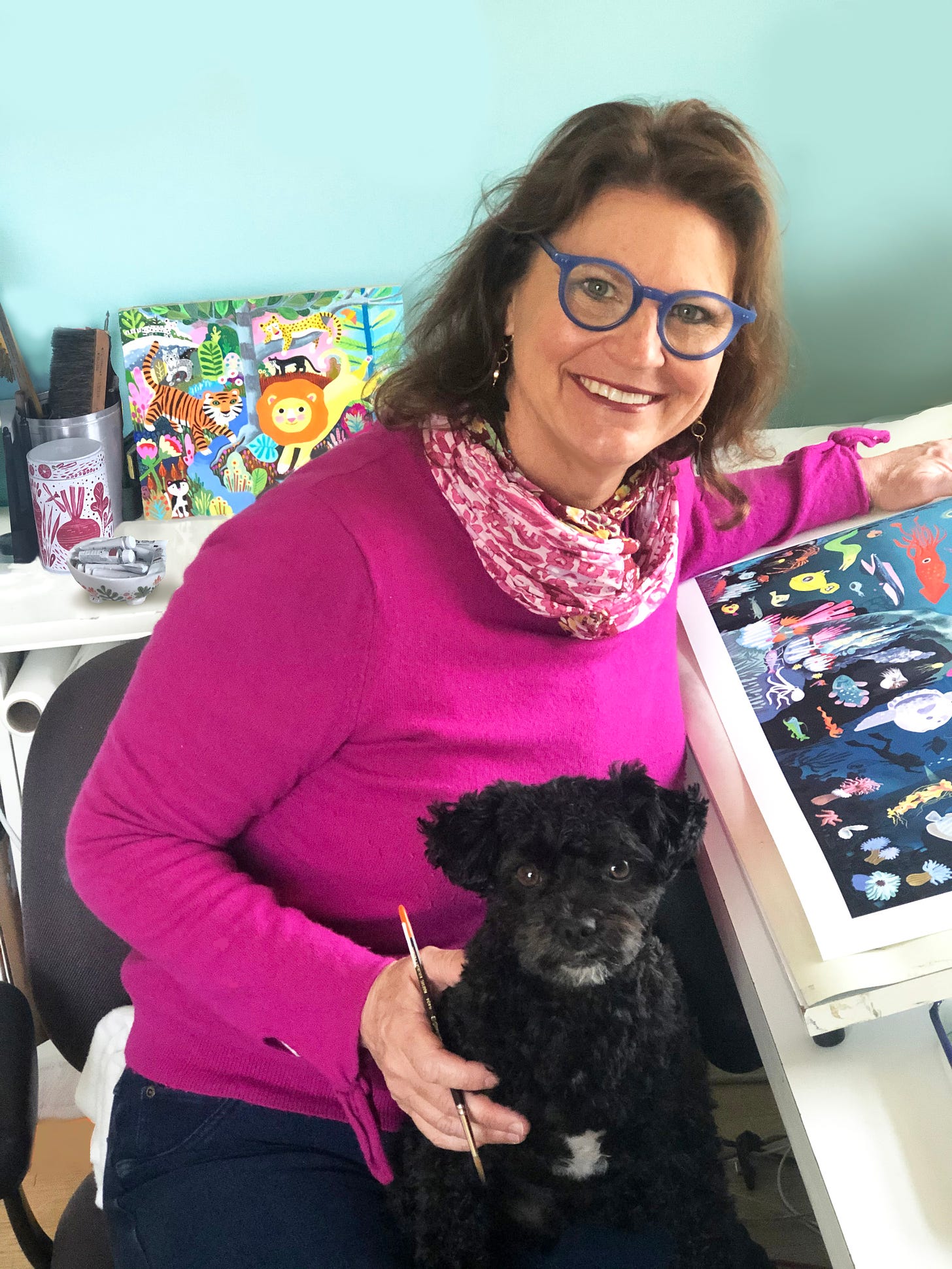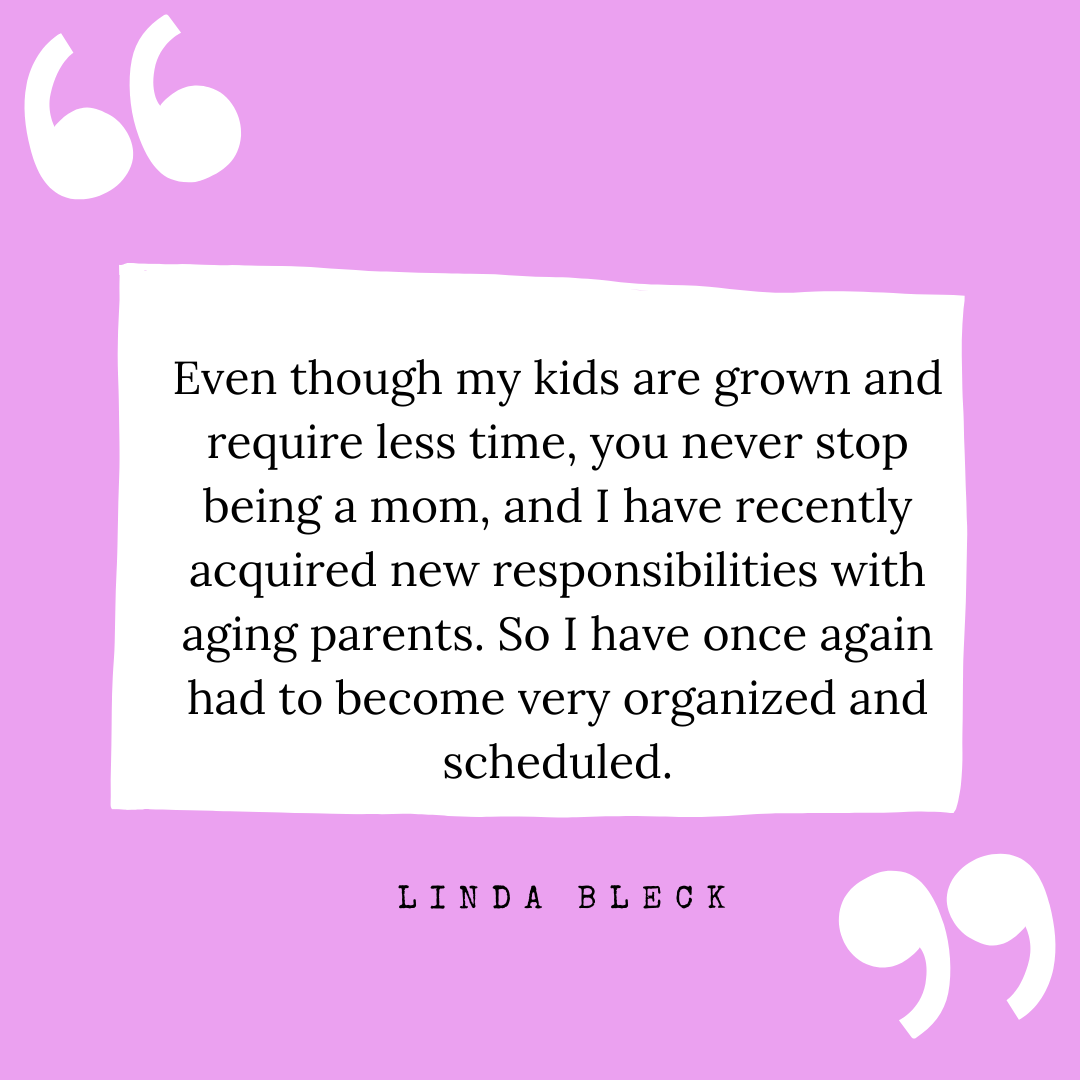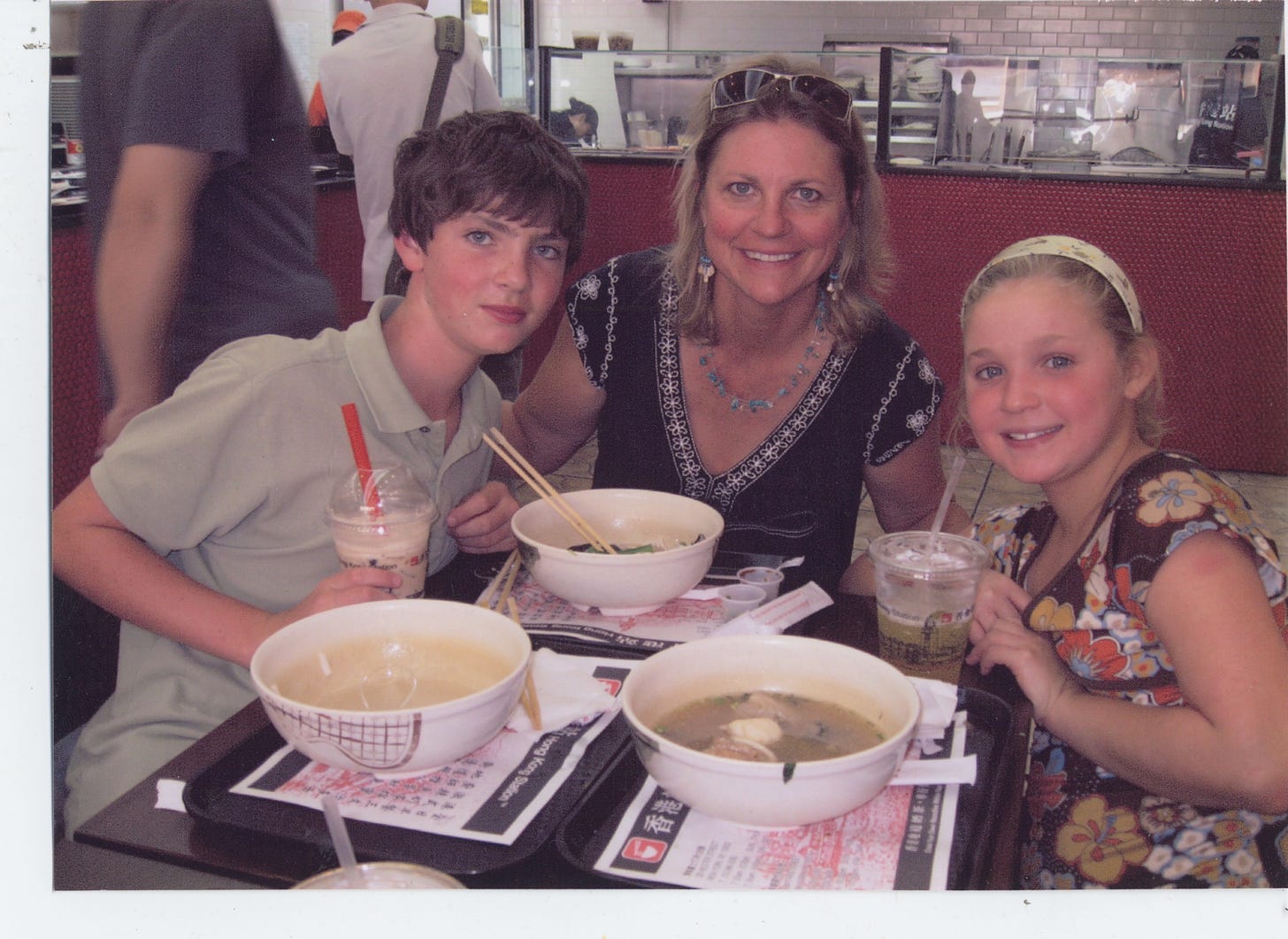Linda Bleck: Solving Problems with Creativity
What did you use to do during recess?
I went to a parochial school in the 70s in a small town in northern Illinois. I loved playing games and sports, especially keep away with the boys. Up until 6th grade I could run faster than most of them. They didn’t like that very much. I wore a skirt during class, so at recess I packed a pair of jeans to change into, so I could get dirty. The nuns told me I couldn’t take my skirt off during recess, so I tucked the skirt into the top of pants. I learned to be adaptive to get the to the goal. I had no boundaries as to what a girl could do or what a boy could do at recess when it came to playing a sport. By 8th grade there were other girls comfortable playing co-ed sports, even the nuns came around. They let us just play in our jeans.:) To me it was an even playing field. I wanted to play sports and I was very competitive.
Did you think of yourself as a creative kid? What does creativity look like for you these days?
I never thought of creativity when I was a child. I don’t think it was discussed like it is today. I would say I was more clever and I would say I was more of problem solver. I loved making something from nothing. I came from a family of creatives where everyone drew well, so I didn’t think I could draw well at all. I kept working at being the best I could be and I’m still working at it. Creativity today is still problem solving. Extrapolating an image out of the written word or coming up with a dynamic composition is always a challenge. I use creativity all across different aspects of my life. As a mother, creativity served me well. I used it to help my kids learn to read, creating custom flash cards and games for learning basic principles of math and science. We played a lot! I invented many games to trick them into learning. I used a lot of creativity to retrain my gait after numerous orthopedic surgeries in my 40s to correct adult diagnosis of hip dysplasia. My son said I would have been a good mechanic.:) Of course creativity serves my illustration career the most these days. I really try to push my work. I believe we should be allowed to evolve beyond a specific style. I experiment with lots of different mediums. Whether or not the public accepts it is a whole other question.
How much time do you get to work on creative projects?
It depends what the project is. Editorial I usually get a couple weeks for sketches and another week to finish. For puzzles, I can usually get those turned around in about 4 weeks. I always have a few things going on at one time. I haven’t created a book since 2013, but I would get a few months to a year produce the entire project.
How did motherhood change your creative practice?
When I became a mother I learned how to create things very fast. I had to become more efficient. My days became more organized. When the kids were babies we played hard in the morning, ate lunch, and then they had a nap or quiet time. It was in that time I would work. I could squeeze in a few hours at night after I put them to bed. I would be tired, but I trained myself to push a bit into the evening. I do not do all nighters because I think it’s unhealthy for my entire well being. We didn’t have as many interruptions with digital media as we do now. I recently started putting my phone away and computers, so that I could just focus on the painting and drawing. Having my work area organized and ready to go was important. Wherever we lived I carved out a private space to work. I also carried notebooks or sketchbooks, so if I got an idea I’d quickly jot it down.
Tell us about a day in your life, how do you fit in creative moments?
Today my life is as busy as when my children were young. Even though my kids are grown and require less time, you never stop being a mom, and I have recently acquired new responsibilities with aging parents. So I have once again had to become very organized and scheduled. I wake very early, do some exercises waking up my mind and body. I take care of any emails and business dealings first thing. Get the boring things done to leave more time for creativity. I do not procrastinate and discipline myself. The pup needs a walk everyday, so sometimes if I am working on a project I will use that time on my 2 mile walk to think through concepts in my head. I am actually doing less drawing and sketching for ideas these days and more time thinking about the concept before the pencil even hits the paper. I have always worked from home and luckily still do. I have never had an issue with distraction. Once I go into my office and close the door I am in the zone to work. I do take little breaks. I find podcasts to focus me better or sometimes I just work in silence. I find a few hours in the evening can be very creative and focused. During busy work times I usually work about 5-6 hours a day. That’s actual time painting or drawing.
When do you feel most creative?
I tend to be the slowest in the summer time these days work wise. I am most productive in the winter months. When I find I am repeating imagery, it’s time to take a break and refocus on the new.
What’s a dream project for you?
I would love to do a beautiful picture book.
—
Linda started her illustration career in 1987,after graduating from University of Illinois /Urbana -Champaign with a BA in graphic design. I moved to NYC thinking I just start freelancing as an illustrator. “ I showed my work around at different children’s book publishers, but they said my work was too sophisticated. I knew it would take a long time to break that market so I switched gears and went all in on editorial illustration. It wasn’t that easy! When I started keeping sketchbooks and picture journals of city life and started dropping those at magazines for the art department to look at, that’s when things started to get rolling.” She worked for almost 10 years as an editorial illustrator , but after moving to Chicago to marry her husband she started branching into other disciplines. Her worked was used across many disciplines in addition to the conceptual illustration work; exhibit design, packaging, capabilities brochures, annual reports, branding." If it needed illustration I did it.”
In 1995 I had my first child. Things started to change for me. I could no longer keep the long hours and focus. It forced me to consider a change. I actually took a step back and refocused on family for a couple years. In 2001 we settled in Wisconsin. My children were ages 3-5. I started concepting a character called Pepper the Dog into lift the flaps and paper engineered compositions. My son had ADHD, later diagnosed, and I was trying to get him to focus on at least looking at books with me. That format worked! In 2005 I published my first children’s book series with Simon and Schuster. The books included Pepper Goes to School, Pepper Picks a Pumpkin, Pepper’s Snowy Day, and Pepper’s Valentine Surprise. Following I produced 6 books for Sterling in the Children’s Treasury Series. In 2008 I was asked to do The Moon Shines Down by Maragret Wise Brown, author of Goodnight Moon. Followed by The Tickly Spider by Parragon Books in England. My first authored and illustrated picture book was Santa’s Hat published by Running Press. In 2016,I published two lift -the -flap books for Scholastic What’s in My truck and What’s in My Train. Because of a health issue I once again redirected and took some time off. In 2019, I approached by Eeboo.com a boutique toy company. “I always wished I could work for them!” Since that time we have built a great working relationship creating puzzles, games, and redesigning and repackaging existing games.
Her children have since flown the nest and embarked on their own careers. She and her husband live in Wisconsin with their yorkipoo Louie.Her son David is a mechanical engineer in technical sales, but with a pension for inventing and designing products. Her daughter Sarah is a graphic novelist and illustrator living in Minneapolis, and a knack for administration and organizational development.
—
Hi! I’m Heidi. Writer. Editor. Mother. I’m interviewing 100 creative mothers, because I believe the more we see other mothers making beauty and meaning in small moments, the more we will be inspired to make our own kind of art, whatever that may look like during this intense season of life. Support the project by sharing with a friend.






